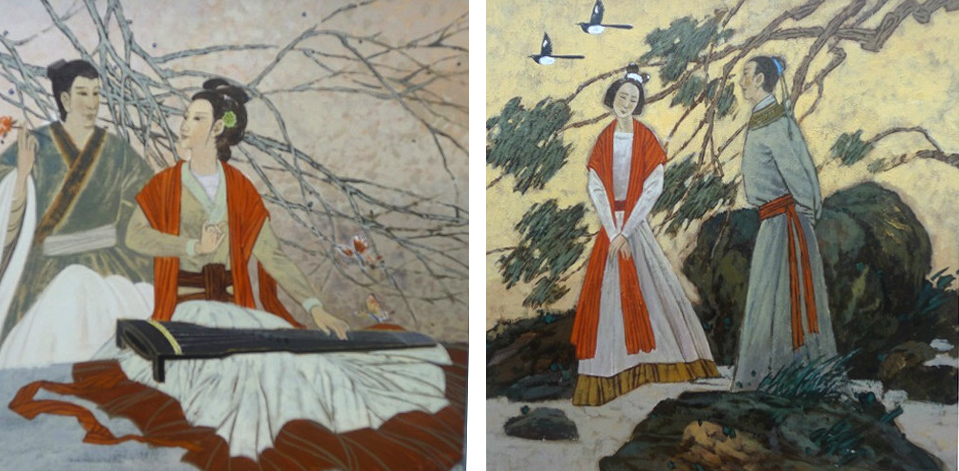Illuminating the literati of Longzhong

Longzhong's poor soil gave it a reputation as the bitterest place in Chinese history, but its diligent people have created a magnificent culture. Qin Jia and Xu Shu are some of the famous figures from Longzhong literature.
Longzhong is located in the Dingxi region of the central part of Gansu Province. Distinct from southeastern Gansu and Hexi areas, the physical geography and cultural traditions of Longzhong are relatively unique. Although Longzhong was named in the late Qing Dynasty, its regional culture developed over a long period of history. Gansu is one of the most significant points of origin of Chinese civilization, and the Dingxi region and its surrounding areas have preserved abundant relics of ancient civilization.
Scholars have recently highlighted the culture of ancient Majiayao painted pottery, which took shape in Lintao County of Longzhong and its surrounding areas. This pottery is believed to have originated from Dadiwan culture in Qin’an County of Tianshui City. It later absorbed peripheral cultures, formed its own style, came across the Yellow River and spread its influences to the West through the Hexi Corridor. Between 3,000 and 2,000 BC, it formed a “road of painted pottery.” According to historical records, Longzhong was an area inhabited by multiethnic groups since the Xia (c. 2070-1600 BC), Shang (1600-1046 BC) and Zhou (1046-256 BC) dynasties. It not only became an intersection of various cultures, but also turned into a key junction or hub of cultural transmission in this long and narrow region between southeastern Gansu and the Hexi Corridor, which stretches 1,600 kilometers from east to west.
Although there are many famous mountains and beautiful rivers in Longzhong, its poor soil gave it a reputation as the bitterest place in Chinese history. However, its long history, diligent people and honest, stoic folklore have created a magnificent culture. Since the Han (206 BC-AD 220) and Tang (618-907) dynasties, culture, art and Confucianism have been popular in Longzhong. In the Han Dynasty, poems from a couple named Qin Jia and Xu Shu in western Gansu circulated in literary circles. Their poems, with five characters to a line, were regarded as the finest works in the Eastern Han Dynasty (25-220). Another member of the literati from western Gansu was Xin Deyuan, who was home-schooled as a child and had extensive learning of classics and history. His works once received praise from Emperor Wen of the Sui Dynasty (581-618). In the Tang Dynasty, Li Chaowei, Li Gongzuo and Li Fuyan, known as the “Three Lis,” came from Longzhong and were famous for their legendary novels. The novels from the “Three Lis” mock reality and encourage kindness, which not only benefited people at that time but also contributed to later generations.
During the Ming (1368-1644) and Qing (1616-1911) dynasties, a number of talented individuals gathered in Longzhong. The Ming Dynasty’s Jin Luan was one of them. He was proficient in melodies and his Nanqu, or Southern Operas, were honored as the “strongest voice in the regions south of the Yangtze River.”
Generally speaking, all literati and scholars in Longzhong were content with poverty and devoted to spiritual pursuits and diligent learning. Literati in Longzhong were not only well known in their hometown, but they also won renown in the Central Plain. Their love of learning and strong will were handed down from generation to generation.
Han Gaonian is from Northwest Normal University in Gansu Province.
